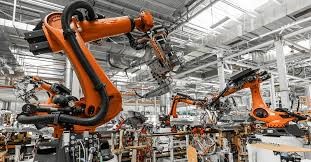Mechanical Engineering: Robotics and Automation Advances in Changing Industry Efficiency
The world is fast changing, but never more so than in the field of mechanical engineering, specifically robotics and automation. Some of the recent activities have changed how robots work, making them smart and effective at work. Such technological changes revolutionized industries and enhanced productivity with new opportunities for innovation.
Advances in the actuator technology area and the other autonomous systems have founded the way for many new applications. Having the ability to do things with more precision and flexibility than ever before, robots open up new facets for their use in industries, manufacturing, healthcare, and other parts of everyday life.
As these technologies are ever-changing, they are implied to change how different aspects in the future world of work are done, and also enhance how tasks are done. Full benefits to society from robotics and automation occur when people adapt to changes.
Key Takeaways
Advances in technology make robots more efficient and smarter.
Emerging technologies are making automation more commonplace in industries.
Technology is changing the future of work.
Innovations in Actuator Technology
Actuators form another important part of robotics and automation. A recent technology breakthrough in the field of actuators has made them more efficient and led to better performance. The two significant breakthroughs are in the field of electroactive polymers and shape memory alloys.
Electroactive Polymers
Electroactive polymers change their shape or size when an electric field is applied to the material. Being lightweight and flexible, these materials are well suited for robotics.
EAPs can serve a variety of functionalities, from sensing to movement. These EAPs work well in soft robotics, for which traditional motors and actuators will be too bulky to use.
The benefits of EAPs are that they have a low power consumption and are capable of creating smooth movements. Some applications include artificial muscles and robotic hands that can mimic human motion.
Shape memory alloys remember their original shape. They are able to return to the shape after deformation when heated. This property provides numerous applications and, among them, is robotics.
In fact, the SMAs have the ability to create great forces in a small envelope. This is why they are applied in actuators in robotics, as they are efficient.
These alloys find applications in medical devices, aerospace, and consumer products. Another advantage is their ability to function without power in their hardened form.

Autonomous System Developments
Recent developments in autonomous systems improve their versatility. Developments have centered around core machine learning and collaborative robot system development. Both of these areas are critical for the optimization of efficiency and adaptability in applications.
Core Machine Learning
Machine-learning techniques play a crucial role in improving the intelligence of autonomous systems. This empowers machines by enabling them to learn from data, thus increasingly performing well over time. The system will make better decisions with little human intervention due to the huge information it has to process.
For example, machine learning’s interpretation of sensor data might go into self-driving cars to enhance their ability to recognize objects, make predictions on behaviors, and navigate through complex environments. The learning process is continuous and enhances the level of safety and efficiency in cars.
Manufacturing process optimization is also undergone with the help of machine learning. A robot with this ability can alter its activities according to actual information. This parameter will result in a lower rate of errors and an increase in productivity.
Collaborative Robot Systems
Cobots are designed to work with humans. Their steady integration into human environments at the workplaces is gradually taking place and increasing the productivity of teams. Unlike ordinary robots, they are safer, are more flexible, and as such, they permit joint tasks.
For example, cobots can help at an assembly line. They can lift more gigantic objects and do this monotonous work, thereby making ease for human workers and relieving their strain. This would enable the workers to focus better on complex duties.
More so, these systems employ a set of advanced sensors to guarantee safety. They can be capable of sensing human presence and modulating their movements accordingly. Just from this ability, the possibility of a workplace incident is thus greatly reduced, and inversely, the level of operational efficiency goes up.
Also Read :
- The Rise of Quantum Computing: What It Means for Technology
- The Future of Mobile Technology: Trends to Watch in 2024
- Blockchain Technology: Understanding Its Impact Beyond Cryptocurrencies
- Technology in Marketing 2024
- DXC Technology and Services